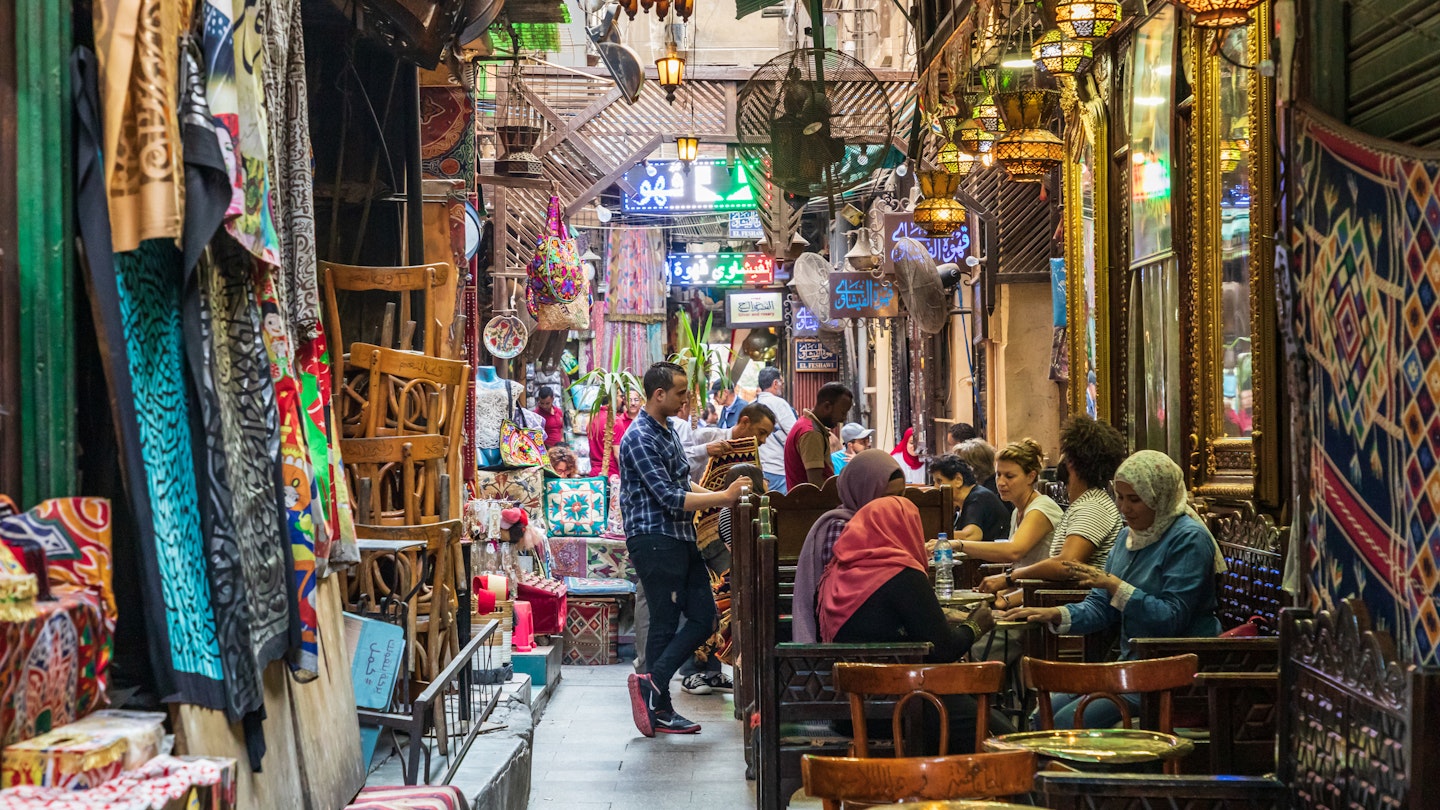Explore the Rich Flavors of Egyptian Cuisine
Modern Egyptian cuisine includes dishes that date back thousands of years to the time of the pharaohs, such as the green soup molokhiyya and hamam mahshi (stuffed pigeon). Bread was a daily staple in the Pharaonic era and remains so today. The Egyptian Arabic word for bread, aish, means “to live,” and the local, round flatbread aish baladi is an essential accompaniment or container for a variety of meals.
Egyptian food also reflects the country’s geographical location – North African, Mediterranean, and Middle Eastern – as well as the influences of various civilizations, including Greek, Roman, Arab, Ottoman, and French. For example, macarona béchamel is an adaptation of the Greek pastitsio, a baked pasta dish with ground meat and béchamel sauce. The popular street food shawarma, meat cooked on a vertical spit, has its origins in the Ottoman Empire and subsequently the Levant.
Despite these influences, Egyptians have been able to hold on to their own culinary traditions and what they consider akl beety (homemade food). One such tradition is cooking with samna baladi, a clear golden liquid similar to ghee made by melting butter until the milk solids separate. Rural communities along the Nile Valley and Delta prefer cooking with it instead of vegetable oils due to its distinct and rich flavor. It is used in everything from the ta’leya, a sautéed mixture of garlic and ground coriander added to molokhiyya, to the buttery layers in the Egyptian flaky pastry feteer.
Popular Egyptian Dishes
Grab a Fuul or Ta’amiyya Sandwich
Where there is fuul, there is ta’amiyya. Fuul medames (mashed fava beans) and ta’amiyya (deep-fried patties made out of fava beans) are considered breakfast foods but can be consumed at any time of day. Fuul is traditionally stewed and served out of a large metal jug called a qedra.
Ta’amiyya is the Egyptian version of falafel, which is made from chickpeas. The secret to tasty fuul and ta’amiyya sandwiches is adding the right ingredients, such as olive oil, cumin, garlic, parsley, and lemon juice for fuul, and tahini and chopped salad for ta’amiyya. The Alexandrian version of fuul usually adds chopped peppers, onions, and tomatoes. For a spicy kick, ask for chili pepper.
Experience the Viscous Nature of Molokhiyya
Molokhiyya, a bright green soup made from broth and finely chopped jute leaves, has a glutinous consistency and is highly nutritious. It is traditionally eaten with rice and chicken or rabbit. In coastal cities like Alexandria, it is cooked with shrimp. The ta’leya or tasha – garlic and coriander fried in oil or samna – is added into the soup as a last step before serving.
Load Up on Carbs with Kushari
Kushari is a mix of white rice, brown lentils, and pasta topped with chickpeas, tomato sauce, garlicky vinegar, and fried onions. The pasta can include vermicelli, cute little macaroni, and small pieces of spaghetti. Shatta (spicy sauce) is optional. Kushari is thought to have roots in India’s khichri, a rice and lentil dish.
Stuff Your Vegetables and Birds
Mahshi refers to the stuffing of vegetables, like peppers, eggplants, zucchini, tomatoes, and grape or cabbage leaves. They are filled with rice seasoned with diced tomatoes, onion, parsley, and spices, and cooked in a pot topped with broth. Variations include adding ground beef or meat shanks. Another specialty is hamam mahshi, a pigeon filled with spiced rice or the green wheat-derived freekeh.
Feast on Fatta
Fatta is a mixture of rice, chunks of boiled meat, and toasted pita bread topped with a garlicky tomato sauce or yogurt. There are several variations, including adding chickpeas or eggplant.
Give New Meaning to “Enriched” Rice
Roz muammar combines rice, fresh cream, milk, and samna baked in a clay oven and is a specialty of the Egyptian Delta region.
Make Some Room for Mashwiyat and Meat Pastries
Mashwiyat includes meats grilled over charcoal, such as kofta (minced meat with spices and parsley rolled into a finger shape), kabab (chunks of lamb or beef), and poultry. Egyptians also fill their bread and pastries with minced meat, onions, and spices as demonstrated by hawawshi, created by a butcher named Ahmed al-Hawawsh in the 1970s, and rokak, a crispy meat pie.
Pile On the Egyptian Pancakes
Feteer meshaltet refers to layered pastry dough coated with samna. Its fillings and toppings can be savory or sweet, served with honey, molasses, and ishta (cream), or a dip made from a specific type of salty cheese known as mish.
Savor Seafood from the Mediterranean to the Red Sea
Egypt is blessed with the Mediterranean to the north and the Red Sea to the east, offering a variety of fish and seafood including grouper, seabass, and shrimp. One can find fried fish bisarya that are eaten whole and various shellfish as well.
Vegetarians and Vegans
Many Egyptian dishes are vegetarian, featuring protein sources like beans and lentils, including koshari, fuul, and ta’amiyya. Bessara is a creamy green dip made from fava beans and fresh herbs. However, lentil soup or molokhiyya may use chicken or meat-based broth, so checking is advisable.
A Year in Food
Religious and Seasonal Celebrations
Coptic Christians celebrate Christmas on January 7, enjoying roasted meats and special cookies. Spring brings Sham El-Nessim, a festival signaling the arrival of warmer weather celebrated with traditional foods.
In summer, Egypt yields an abundance of delicious fruits like mangoes and figs, while winter brings a peak in strawberry harvests. Islamic holidays feature unique desserts, reflecting the rich tapestry of Egyptian culture and cuisine.
Embrace the vivid tastes and rich history of Egyptian cuisine, which continues to inspire and nourish both locals and visitors alike.





